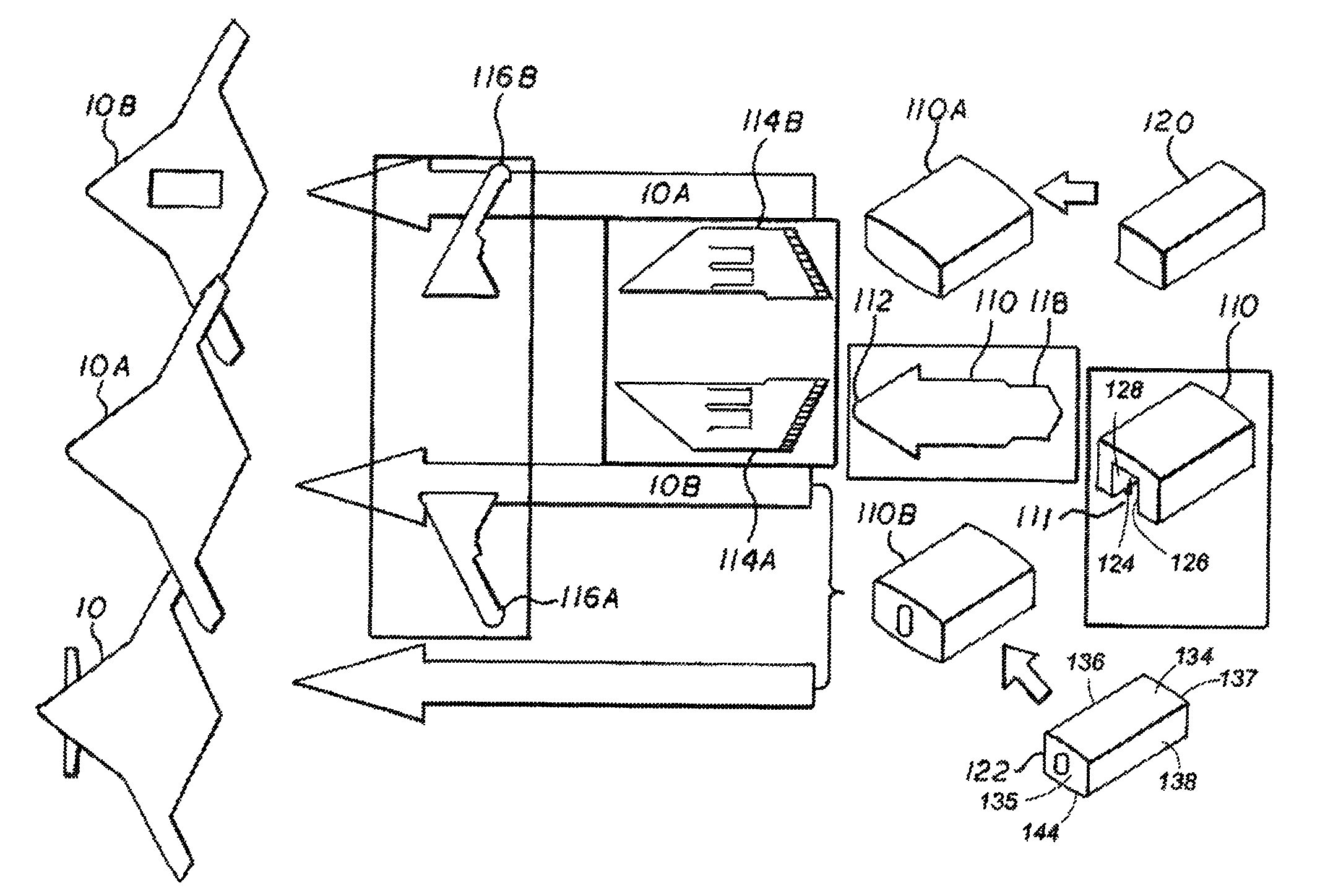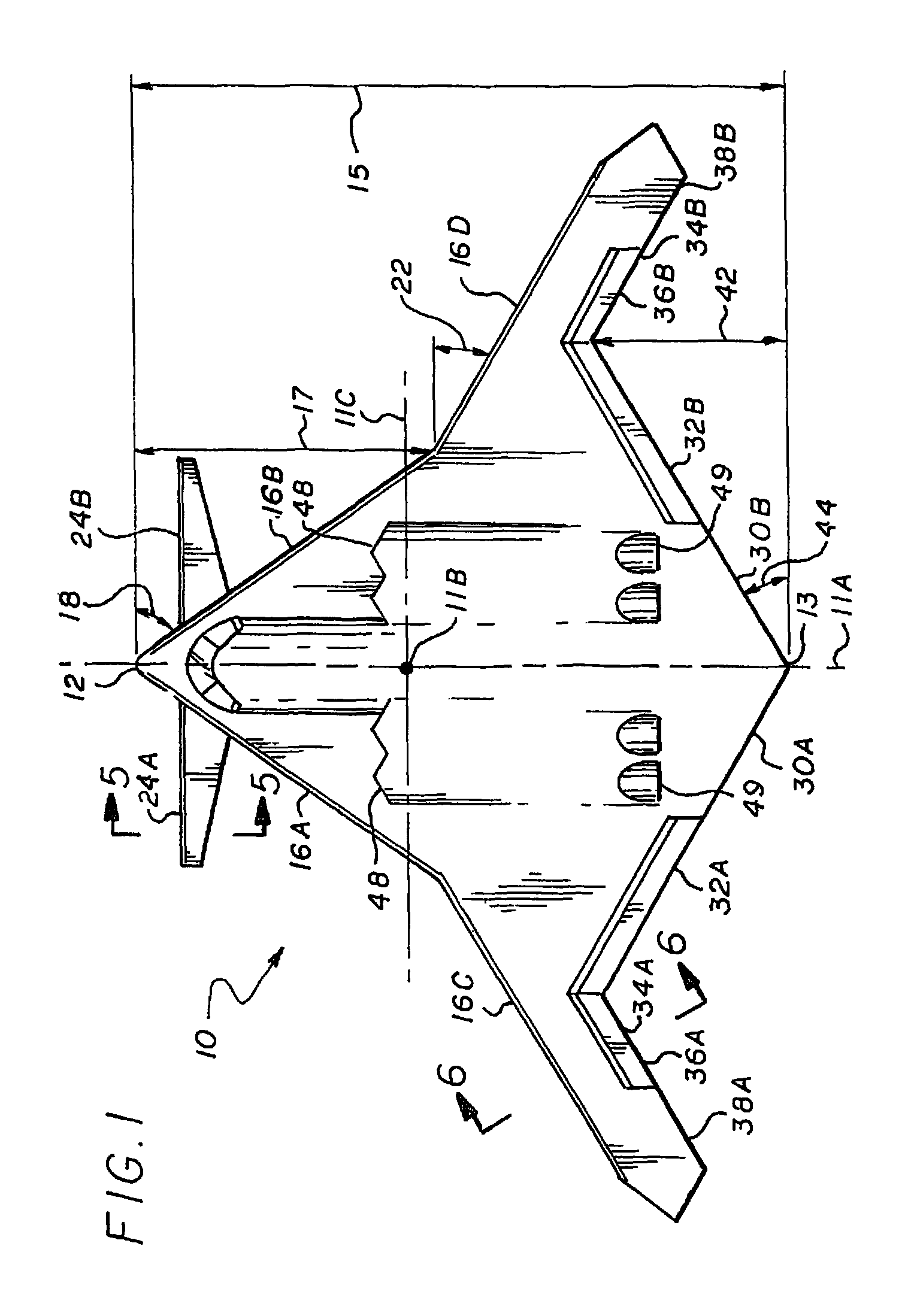Flying wing aircraft with modular missionized elements
a technology of flight wing aircraft and modular design, applied in the field of modular design of aircraft, can solve the problems of not being particularly new in concept, not being able to achieve multiple missions, and not being able to achieve the effect of multiple missions,
- Summary
- Abstract
- Description
- Claims
- Application Information
AI Technical Summary
Problems solved by technology
Method used
Image
Examples
Embodiment Construction
[0025]Referring to FIGS. 1-5, the flying wing aircraft, is generally designated by numeral 10 and has longitudinal axis 11A, vertical axis 11B and a horizontal axis 11C. The aircraft 10 includes a nose end 12, tail end 13 with an overall length 15. The right and left inner leading edges 16A and 16B extend back from the nose end 12 over a distance 17 at a sweep angle 18, of between 30 and 80 degrees. The distance 17 is about 40 to 60 percent of the total length 15 of the aircraft. The left and right outer leading edges 16C and 16D A have a sweep angle 22, of between 0 and 80 degrees as measured from a local horizontal.
[0026]Mounted in proximity to the left and right inner leading edges 16A and 16B are right and left canards 24A and 24B having Coanda effect airfoil cross-sections (see FIG. 5). The canards 24A and 24B have an axis of rotation 25A and 25B, respectively and an actuation system 26 that retract the canards to form part of the leading edge 16A and 16B or the canards may be ...
PUM
 Login to View More
Login to View More Abstract
Description
Claims
Application Information
 Login to View More
Login to View More - R&D
- Intellectual Property
- Life Sciences
- Materials
- Tech Scout
- Unparalleled Data Quality
- Higher Quality Content
- 60% Fewer Hallucinations
Browse by: Latest US Patents, China's latest patents, Technical Efficacy Thesaurus, Application Domain, Technology Topic, Popular Technical Reports.
© 2025 PatSnap. All rights reserved.Legal|Privacy policy|Modern Slavery Act Transparency Statement|Sitemap|About US| Contact US: help@patsnap.com



